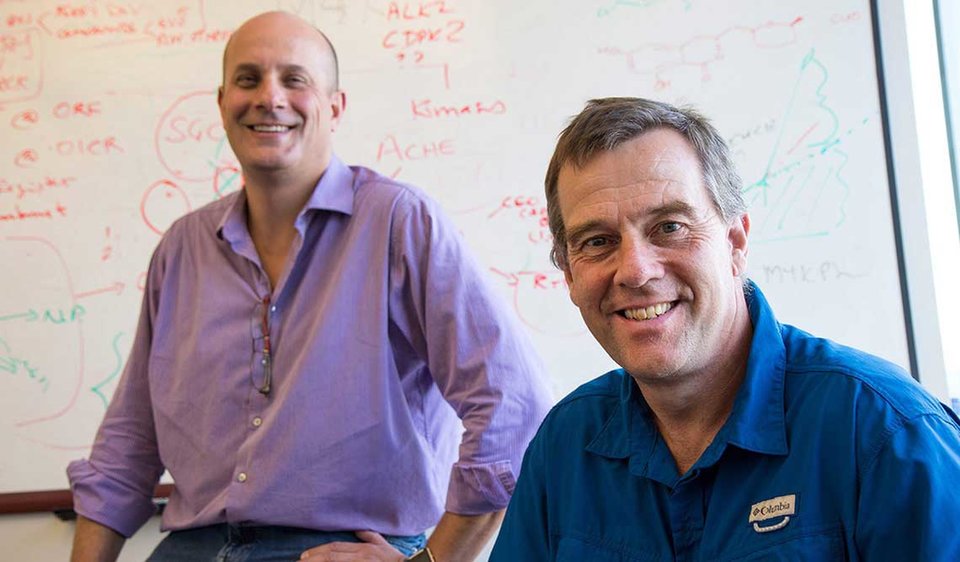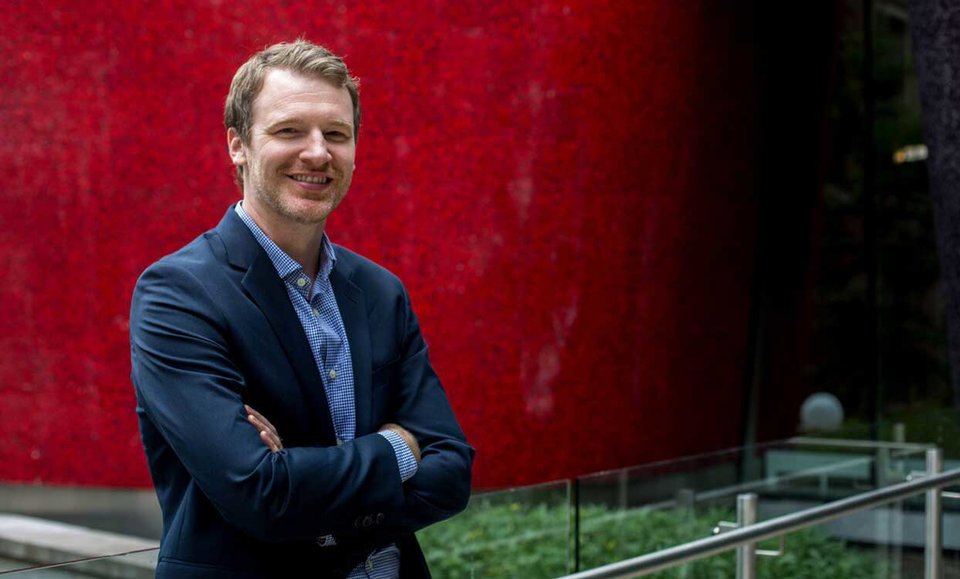Drug Development
Drug development: the researchers driving an open-science approach
Researchers at the University of Toronto have launched two pharma start-ups dedicated to pursuing new treatments through an open-science model of drug development. The firms’ strategy encourages accelerated drug discovery and development by forgoing profits and patent protection in favour of public data-sharing and broader collaboration. Chris Lo finds out more.
As the era of personalised medicine and medical genetics continues to ramp up, it brings with it ambitions for more precisely-targeted therapies in a host of indications, and new hope for the treatment of rare diseases and genetic disorders.
But, opening the floodgates of therapeutic possibility comes at a cost. With clinical research and development (R&D) expenses estimated in the billions of dollars for an average drug that makes it to market, targeting treatments at increasingly small patient groups – whether they suffer from rare diseases or versions of more common conditions with distinctive genetic characteristics – raises hard questions for public health systems and private payers with strained budgets.
Drug prices are at the top of the pharma agenda, whether in US Congress or in the board rooms of the world’s largest drugmakers. For rare conditions, the outlook is even more tangled – if Big Pharma is spending billions on developing drugs for a relatively small patient population, how else to recoup investment other than through sky-high pricing? Even for a relatively familiar orphan condition like cystic fibrosis, there is a seemingly unsolvable tension around the pricing of innovative treatments, as a recent UK parliamentary hearing on the price of Vertex’s Orkambi demonstrates.
In the midst of increasingly fraught price negotiations between drug manufacturers and health organisations, a more radical question becomes relevant: is there another way to do this?
Open science: an alternative to the pharma business model
It’s a question that M4K Pharma, a pharmaceutical start-up founded by University of Toronto researcher Professor Aled Edwards and his business partner Owen Roberts, hopes to answer with a resounding ‘yes’.
Edwards and Jones established M4K (Meds 4 Kids) in late 2017 with a goal of developing a new treatment for diffuse intrinsic pontine glioma, a rare paediatric cancer that is incurable and fatal, with a five-year survival rate of less than 1%. More recently, Edwards also announced the founding of M4ND Pharma (Medicines 4 Neurodegenerative Diseases), a second start-up dedicated to pursuing novel genetic drug targets for neurodegenerative conditions such as Parkinson’s disease and amyotrophic lateral sclerosis.
The companies will not seek commercial patents for their products.
However, it’s not the R&D strategies of these companies that make them stand out. They are effectively the first two drug development companies in the world committed to developing drugs through a model of open science, a collaborative approach that emphasises open sharing of data with partners and the public. The firms are being run as virtual companies, with scientific updates uploaded to YouTube and funding and collaborators sought across a wide range of potential contributors.
As data is shared openly, the companies will not seek commercial patents for their products – lead compound MK2009 for M4K, while M4ND is at an earlier stage of research – instead relying on the standard market exclusivity period offered by regulators for newly approved molecules. This, they say, makes the R&D process far more nimble as it isn’t bogged down by secretive negotiations and intellectual property wrangling, but it does beg the question of how the drug development process can be sustainable without patent protection.

M4K Pharma founders Aled Edwards and Owen Roberts. Credit: Chris Sorensen-U of T News
How does open-science drug development work?
So how does the project’s vision of open-source drug development actually work? M4K and M4ND are trading subsidiaries of a Canadian charity called the Agora Open Science Trust, which supports open science for the public good, and will reinvest any profits generated by the companies into other open-science endeavours.
Both companies started with seed funding through public or philanthropic grants – the Ontario Institute for Cancer Research in the case of M4K, the Krembil Foundation for M4ND – rather than private investors. The initial funding is then leveraged to attract collaborators from industry and collaborator for in-kind services such as assay screens and medicinal chemistry work.
“We’ve had pharma companies that have had research groups phone in to our meetings and give us information that’s really helpful in terms of what leads to pursue and what things not to do,” says M4K Pharma’s corporate secretary and legal consultant Max Morgan, who has been involved with the project from the start.
We’ve had pharma companies that have had research groups phone in to our meetings and give us information.
“There have also been a couple of CROs [contract research organisations], big ones like Charles River Laboratories and Reaction Biology, that have come to the table and offered in-kind FTEs [full-time equivalents] to do medicinal chemistry and some biological assay screens for us. For them it’s really a corporate social responsibility initiative, but it also shows how this can operate as an eco-system that’s beneficial to the private sector too. These groups are actually able to showcase their talents in a way that they can’t when they’re operating in a proprietary development programme.”
Addressing the cracks in modern drug development
According to Morgan, the companies’ unique approach is a response to the flaws of the traditional pharma drug development model.
“The very process of pursuing patents along the development pathway makes it very hard to disclose data,” Morgan says. “It tends to slow things down. What you have instead is the siloing of different research programmes all pursuing the same thing and redundantly spending funds and resources on the same target. That’s amplifying the cost of R&D from an aggregate perspective, and it’s failing to find potential synergies between research groups.
The idea is to push the boundary between academic science and commercialisation.
“The bulk of research these days tends to look at rare diseases, and in fact with the improved understanding of the genetics of disease, I think that’s where things are going to go more broadly, even with large indications. They’re going to be sub-divided into smaller, genetically characterised conditions. And to develop therapeutics for those with the same cost of development in play, the only way to make money in that context is to charge more money. So, we’ve seen an incredible escalation in the cost of new medicines in recent years. That’s really a consequence of proprietary secret development programmes working in parallel, but being driven by investment capital.
“What we’re trying to do is tap into another way of doing this more efficiently and with alternative sources of capital that support it. The idea is to push the boundary between academic science and commercialisation much further down the development pathway.”

M4K Pharma’s corporate secretary and legal consultant, Max Morgan. Credit: U of T Faculty of Medicine
Moving into clinical development: unanswered questions
From a preclinical perspective, Morgan says that contributions to M4K’s work have been extensive enough that it has been “somewhat difficult to actually spend the seed grant money that came in the door”. So far at least, the group’s experience seems to validate open science as an efficient model for preclinical development that hasn’t left the project bottlenecked through lack of resources.
Clinical development and bringing a drug towards large-scale Phase III trials is another matter entirely. Open science is hardly a new concept in academic circles, and many pharma firms have benefited from open data sharing on early scientific advances that they have gone on to commercialise. But in full clinical development, a stage M4K hasn’t yet reached, the open science model represents uncharted waters.
“On the clinical side, that’s a whole other ball game,” says Morgan. “We need to navigate that when it comes.”
When the day does come, the M4K team is hoping the project will be able to tap clinicians to help conduct early-stage clinical trials, while for Phase III, a bigger discussion will be necessary.
“Once you get into a bigger trial like a Phase III, you’ll have to raise some real capital, and we’ll need to think about whether we can convince governments to step in there, and take advantage of orphan disease incentives,” says Morgan, who has had discussions – not in any way conclusive – with Canadian drug regulator Health Canada about the possibility of tying funding or incentives to affordable pricing for a potential approved drug.
In full clinical development the open science model represents uncharted waters.
Beyond that, the de-risking of an approved drug developed through open science would be essential to finding a commercial partner to take on the manufacturing and marketing role for a product that would need to be affordably priced.
“The hope is that by bringing an asset through clinical trials and towards registration, if not all the way through registration, we could come to the table with a good negotiating position around pricing commitments from a partner,” Morgan says. “You’d be bringing them on to develop the appropriate manufacturing capacity and engage in the marketing process. Those are obviously large costs as well, but the R&D part of it, which is often what is advanced as the rationale for high drug prices, is taken off the table. You’re approaching them with an exclusive market period that you can license to them so that they can make a profit, but one that’s constrained in the negotiation.”
The team is looking into a more systematic analysis of the benefits and challenges of open-science drug development in terms of costs, timelines and partner contributions, which would go some way towards validating the process as it goes along. In the longer-term, the truest validation would be an approved, affordable drug on the market to treat a truly deadly paediatric cancer. Whether M4K’s development model – not to mention its scientific approach – is up to the task remains an open question.
“Ultimately,” concludes Morgan, “what’s going to prove the model is for it to deliver the goods.”
Go to top